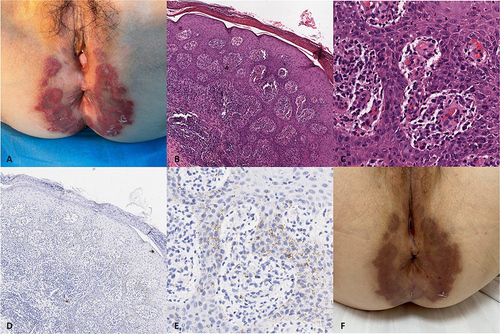Figures & data
Figure 1 (A) Red ring plaque around the patient’s anus. (B and C) Histopathological examination of the red patches of skin with ridges at the edges showed parakeratosis, epidermal hyperplasia, and a dense band of inflammatory cells, mainly lymphocytes and plasma cells, at the junction between the lower epidermal process and the true epidermis.(hematoxylin-eosin staining, original magnification X50, X200, respectively). (D and E) Immunohistochemical staining showing numerous spirochetes in the lower part of the epidermis (Immunostain spirochete stain, original magnification X50, X200, respectively) (F) After 2 weeks of penicillin intravenous treatment, the perianal rash subsided than before, leaving pigmentation.

